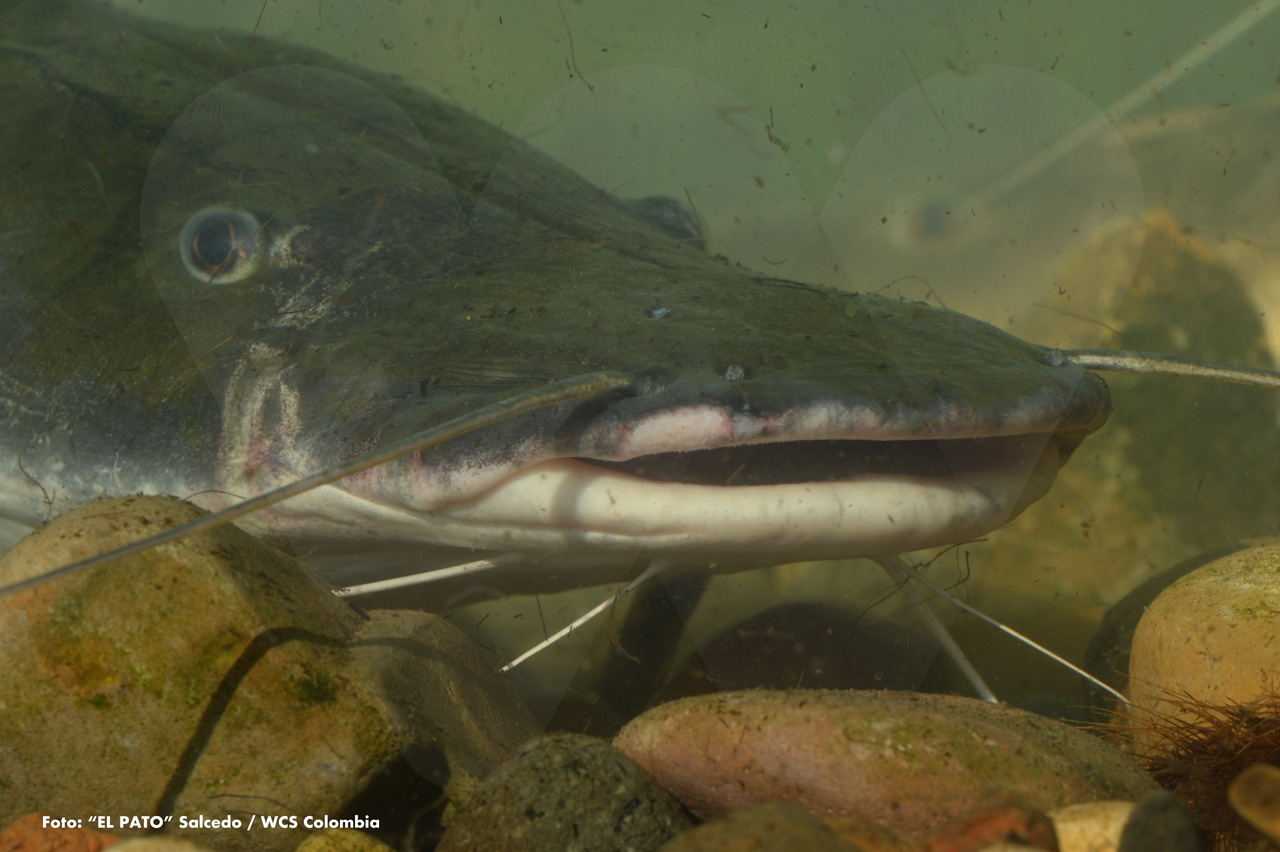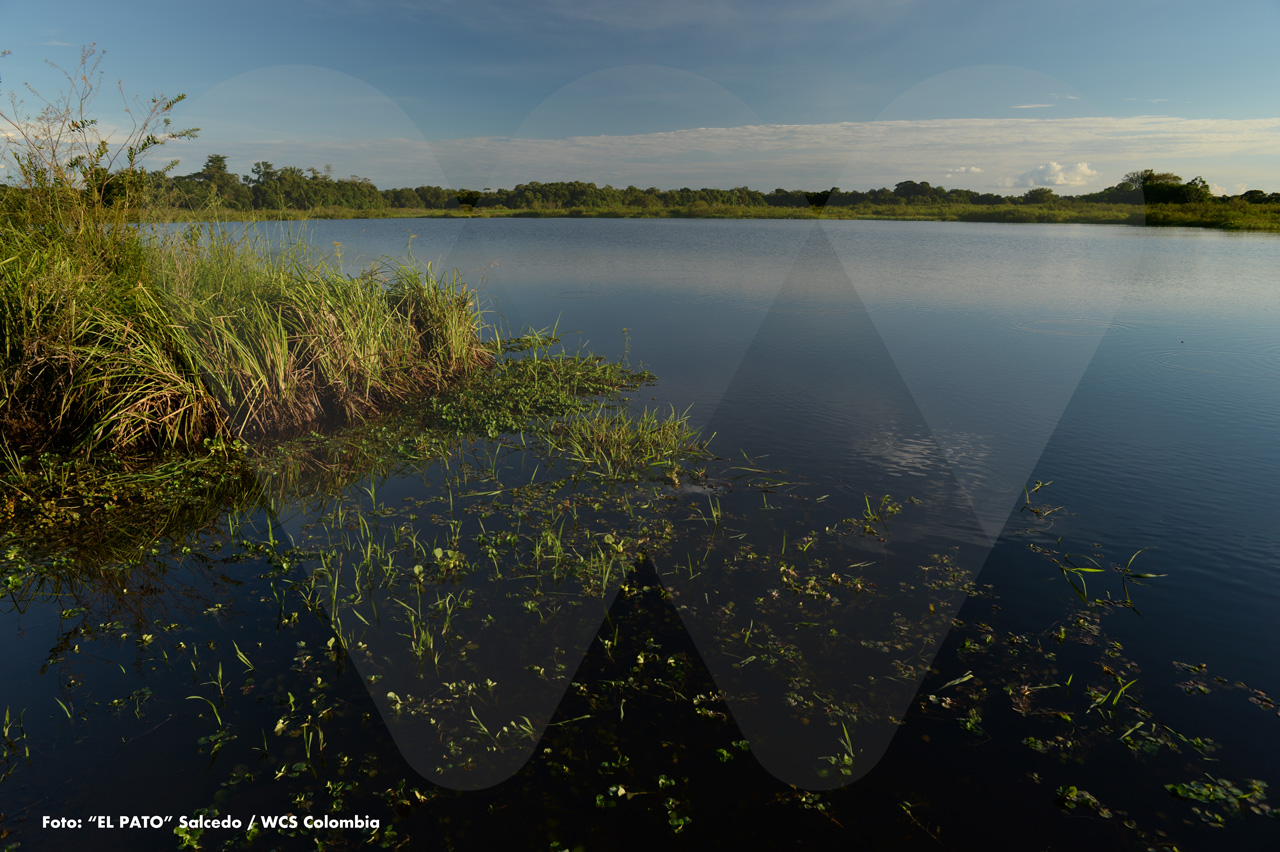 The Fish
The Fish
The only place in the world where the Magdalena catfish lives is the Magdalena River basin, an extensive territory where it is considered the most commercially valuable fish. Unfortunately, this status has led to immense pressure on the species. As a result, catches have declined by nearly 90% over the last thirty years. To date, Pseudoplatystoma magdaleniatum—its scientific name—is listed as "Endangered" (EN) by the International Union for Conservation of Nature (IUCN) in its latest update, meaning it faces a very high risk of extinction in the wild.
 Nurseries
Nurseries
There is a marsh complex called Carare – Barbacoas, located near the Magdalena River in the departments of Santander and Antioquia. This is where the Proyecto Vida Silvestre (PVS)* has been working with fishing communities to reach sustainable use agreements that help protect the Magdalena catfish. One of these measures is the care of wetlands, such as the one shown in the photo, called El Clavo. These wetlands serve as nurseries for countless fish during their early life stages.
 Fishing Agreements
Fishing Agreements
One of the greatest threats facing this iconic species has likely been overfishing. For this reason, several fishing communities in the Magdalena Medio region—especially those living in Santander and Antioquia—have been reaching a series of agreements for its conservation. These agreements range from the total ban on capturing the fish in certain wetlands, respecting fishing closed seasons, to detailed proposals regarding the use of fishing gear based on the locations where they are employed.
 Wise Catfish Fisherman
Wise Catfish Fisherman
Walfran Martínez is widely known in the Magdalena Medio region. A seasoned fisherman, he lives in a small town called San Rafael de Chucurí, in Santander. His extensive experience handling fish, along with his deep knowledge of the river, wetlands, and various fishing techniques, have made his voice represent hundreds of fishermen living in the area. Walfran’s great dream is for the Magdalena catfish to once again be the abundant species it was not so long ago.
 The Fishing Ban
The Fishing Ban
This takes place twice every year: first, throughout the entire month of May; and second, from September 15 to October 15. Both periods are considered peak moments in the reproductive cycle of the species, so its capture and commercialization are prohibited (AUNAP). In addition, fishermen from Magdalena Medio have been actively involved in participatory monitoring to identify the “candeleo,” a term associated with other reproductive events of the Magdalena catfish linked to the rise in water levels. During the fishing bans, many fishermen seek income by working the land.
*The Proyecto Vida Silvestre, an initiative led by Ecopetrol, Fondo Acción, and WCS, works toward the conservation of 15 species (twelve fauna and three flora). It operates across three landscapes in Colombia: the Eastern Plains (Llanos Orientales), the Magdalena Medio, and the Andean-Amazon Piedmont (Putumayo).
Traslated with AI support